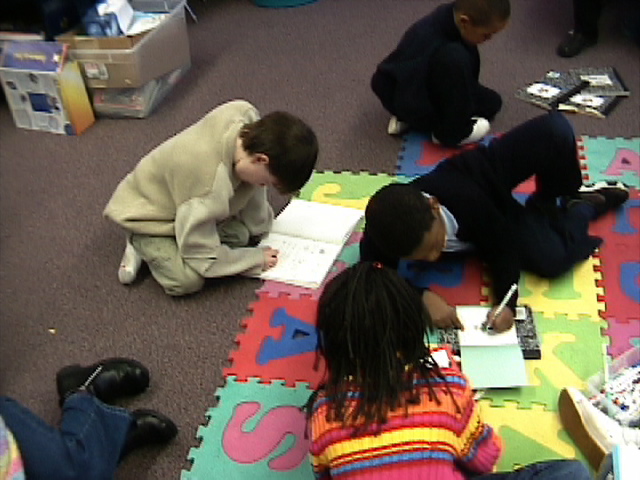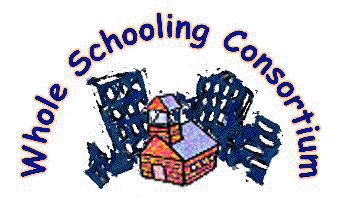

The Whole Schooling Consortium
links individuals
and schools in work to build such schools based on EIGHT PRINCIPLES
of Whole Schooling. Below we provide an introduction to Whole Schooling -- the
need for school improvement , the purpose of schools, and a discussion of each
of the Eight Princiuples of Whole Schooling including links to additional information
and resources.
Create better schools! Do schools need to be improved? Many believe they do. What are the directions of policy and practice?
Why have school? What is the purpose of schools? Why do we have them? Whole Schooling posits that the purpose of schooling should not be a test score but to help children develop skills that maximize their lives opportunities and to develop active, effective citizens for democracy.
Create a culture for high learning and achievement. Many schools, it seems, have systematically created conditions that assure that many children are left behind. Schools make a difference and we need to pay careful attention to what helps and what hurts. We need schools that provide a sense of care and community, engage children in learning how to make decisions, use power, and be responsible, involve students in authentic learning connected to their own lives. This provides the foundation for high learning and achievement for all students.
1. Create learning spaces for all. Good teaching starts at the beginning of the year – organizing the space of the classroom in ways that can support effective teaching practice and learning for all students. The teacher creates space that encourage children to work together, has places to be alone, and provides materials for all to use in an efficient manner.
2. Empower citizens for democracy. If we are serious about helping children become empowered citizens in a democracy, schools must involve children in sharing power and decision-making in the daily life of the classroom. Further, democracy must be an integral part of the culture of a school among adults- collaboration among staff in partnership with parents and the community.
3. Include all in learning together. For a democracy to function, by definition, all children must be there. For students to learn well, to be prepared to function in a diverse society, they must be exposed to people with diverse characteristics. Students learn at deeper levels when they are part of heterogeneous classrooms. Thus, we seek schools in which All children learn together across culture, ethnicity, language, ability, gender, & age, where separate pull-out programs and ability grouping in the classroom are used seldom if at all.
4. Build a caring community. Effective schools that serve truly diverse students in authentic and democratic learning must work together to build a community and provide mutual support within the classroom and school. When students engage in behaviors that are challenging, staff understand that these are expressions of underlying needs of students and seek to help students find positive ways to meet their needs. Staff make commitments to caring for and supporting such students in their school.
5. Support learning. Support in learning is needed by teachers and children alike. Schools use specialized school and community resources (special education, title I, gifted education) to strengthen the general education classroom. Support personnel collaborate with the general education instructor to include children with special needs in classroom activities and to design effective instruction for all students. They avoid ability grouping or teaching children at the back or side of the room. All struggle to provide proactive supports to meet needs of students with behavioral challenges.
6. Partner with families and the community. Finally, educators cannot and should not seek to build such a school alone. In a Whole School, educators build genuine collaboration within the school and with families and the community; engage the school in strengthening the community; and provide guidance to engage students, parents, teachers, and others in decision-making and direction of learning & school activities.
7. Teach all using authentic, multi-level instruction. For schooling to work, for children to learn, instruction cannot be monolithic and traditional one size fits all. Rather, we expect students to function at a range of ability levels, each being supported and encouraged to move to their next level of competence, yet without ability grouping or segregation. In such schools teachers design instruction for diverse learners that engages them in active learning in meaningful, real-world activities at multiple levels of ability, providing scaffolds and adaptations as needed.
8. Assess students to promote learning. Effective schools go far beyond using standardized tests. Rather authentic, curriculum-based assessment is used to determine what students know so that learning strategies can be targeted to help them go to the next level of performance. Systematic tools are also used to help understand how a student best learns to target instructional strategies most effectively.
Michael Peterson, 2007
